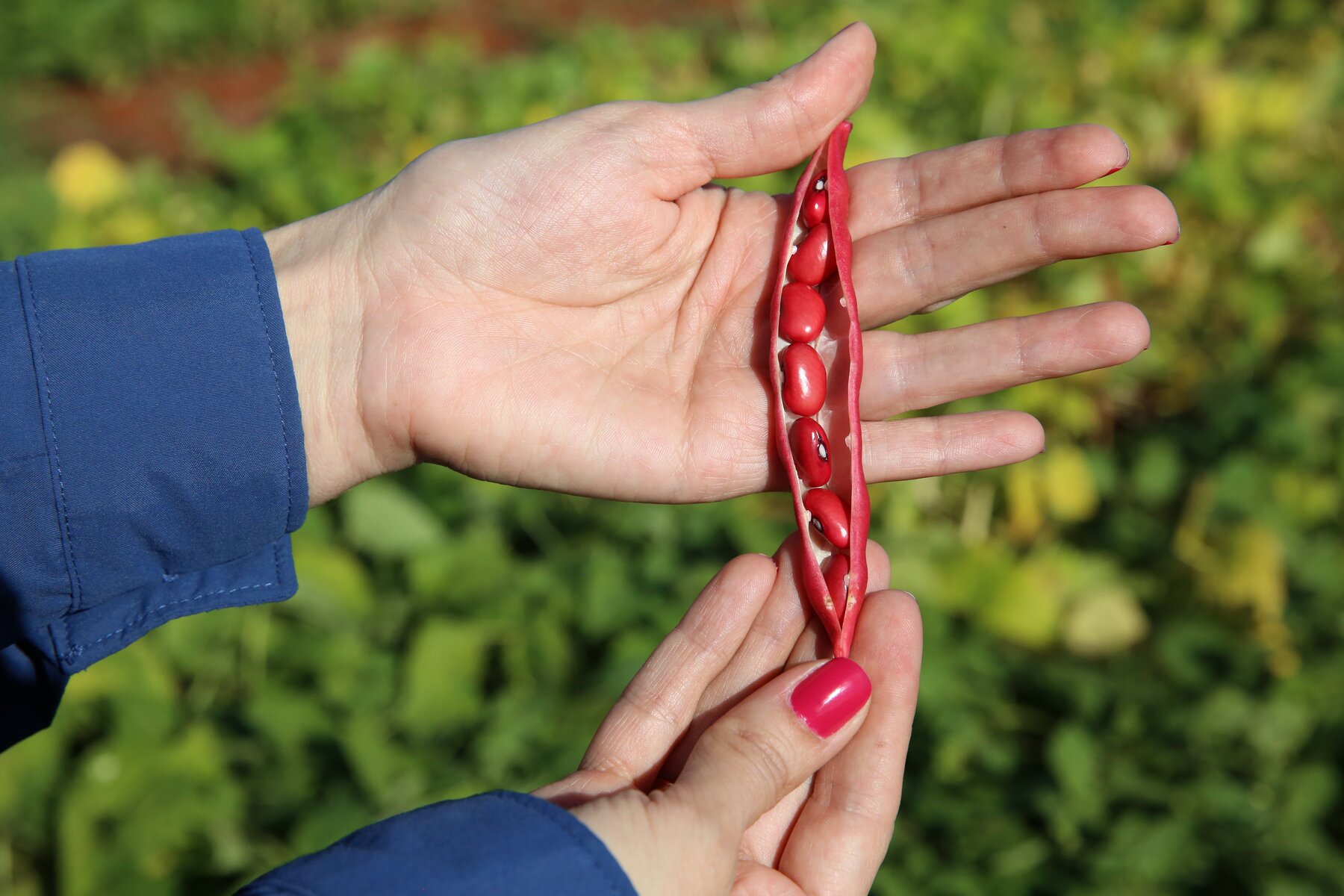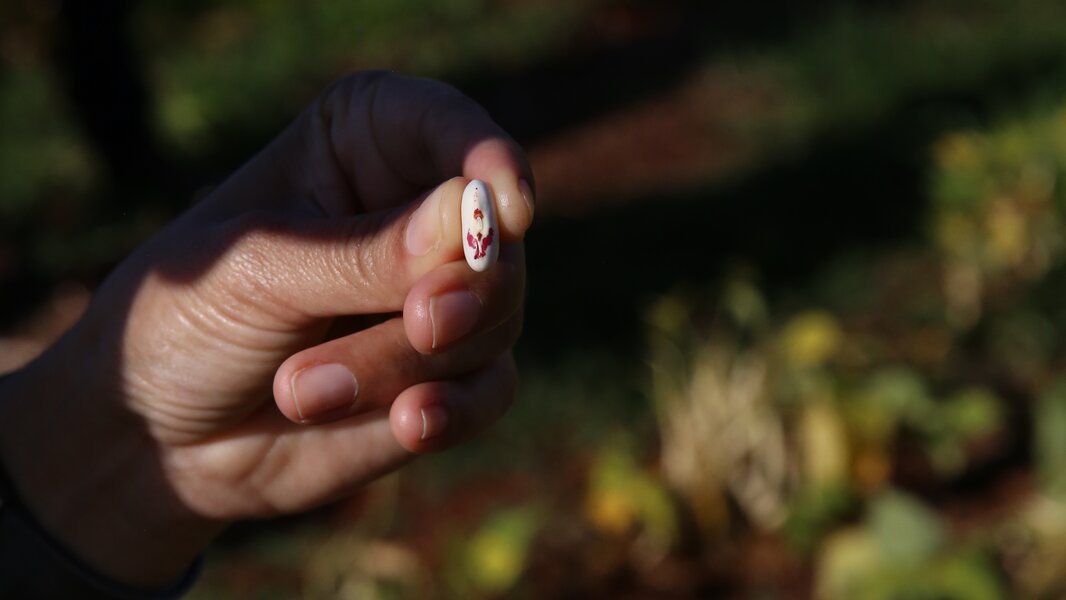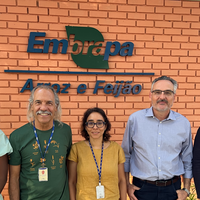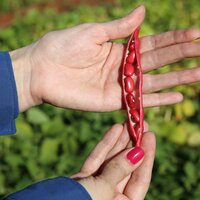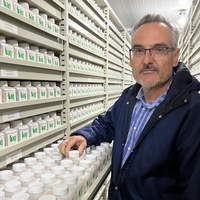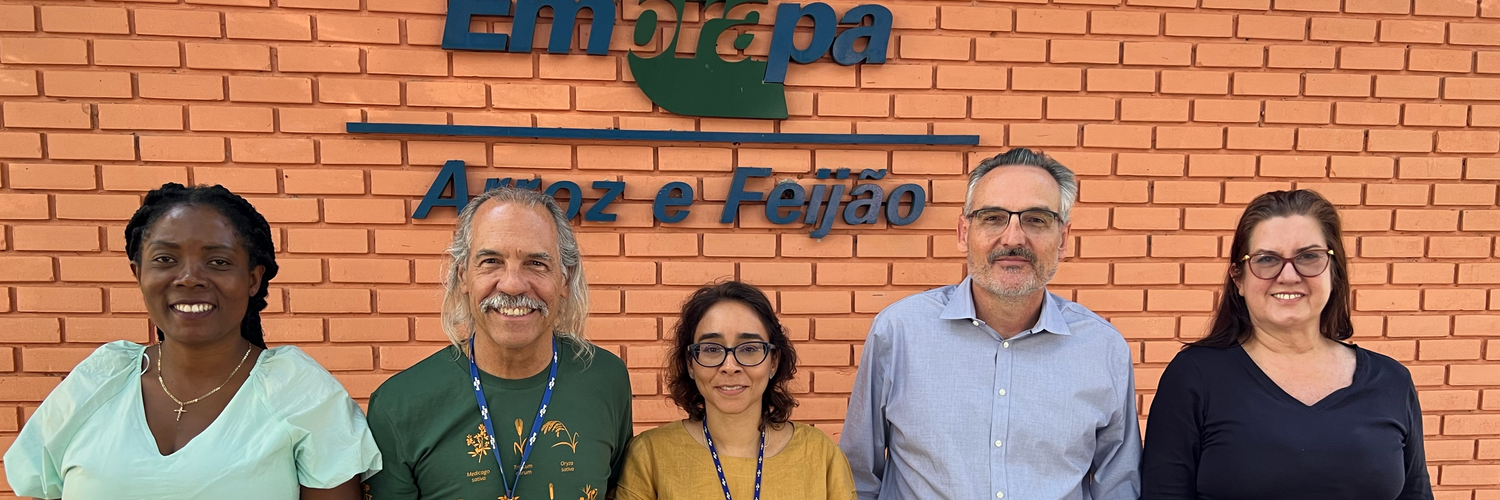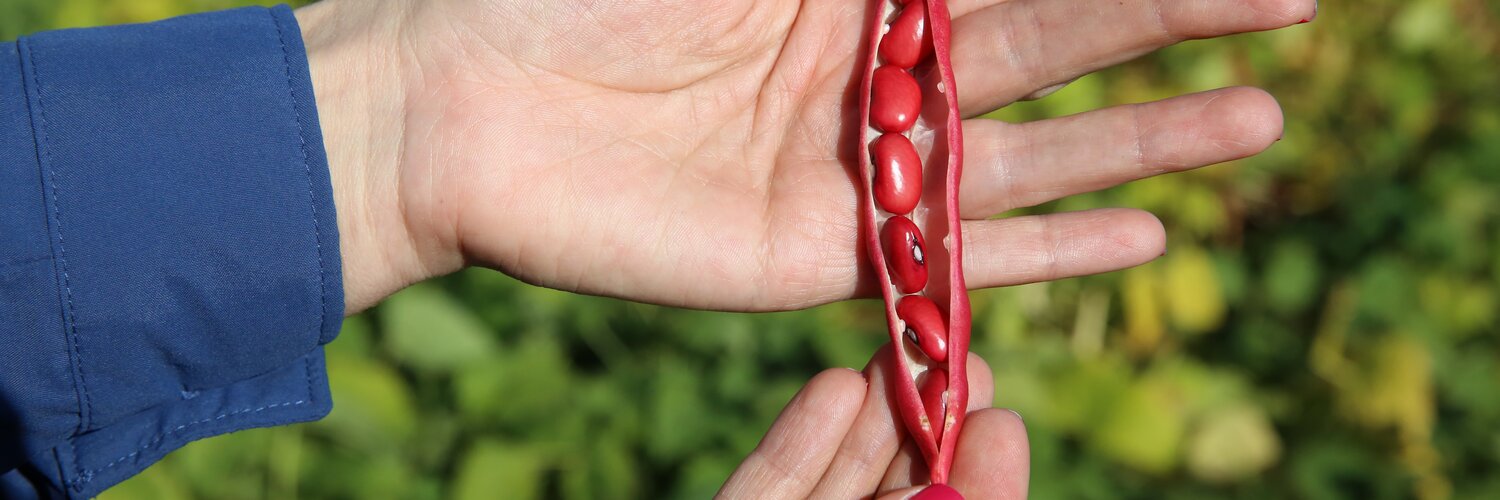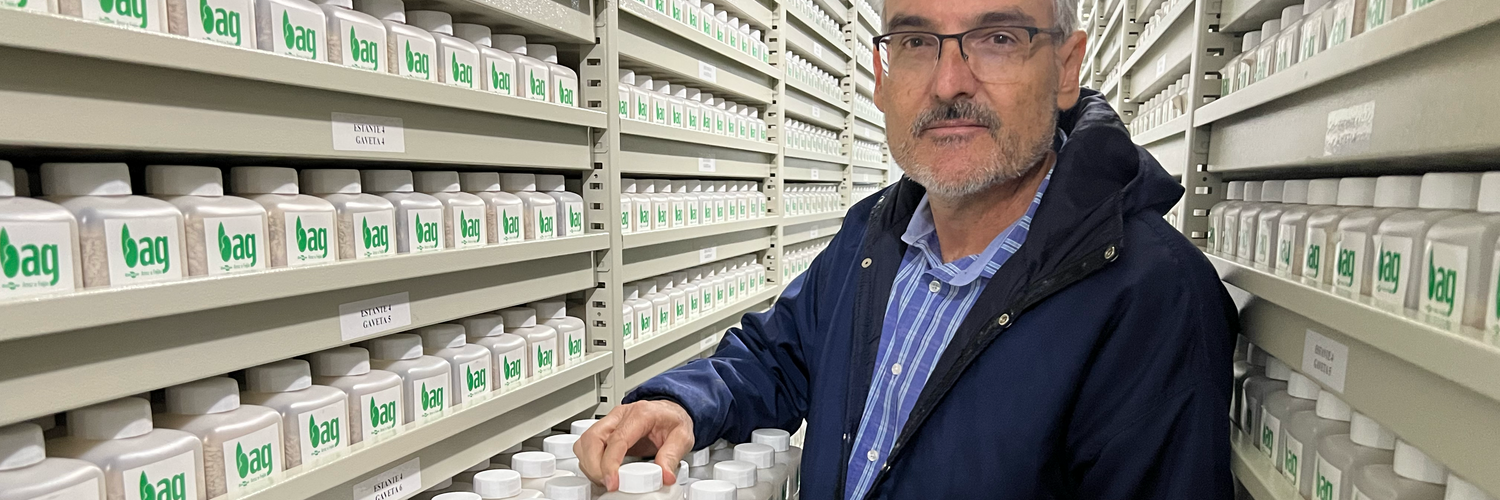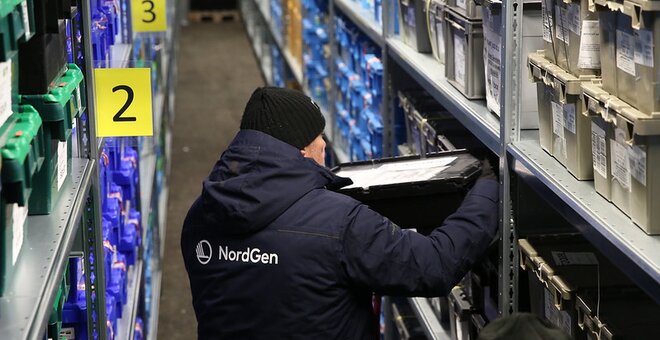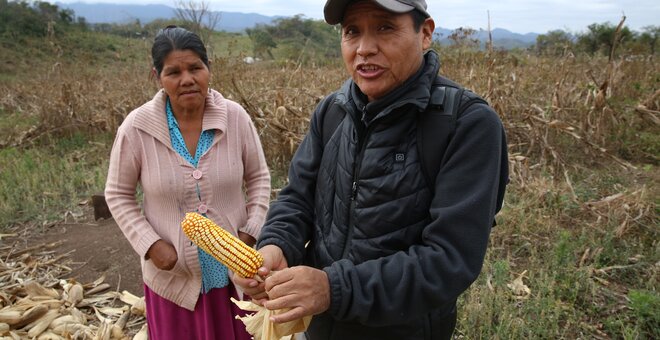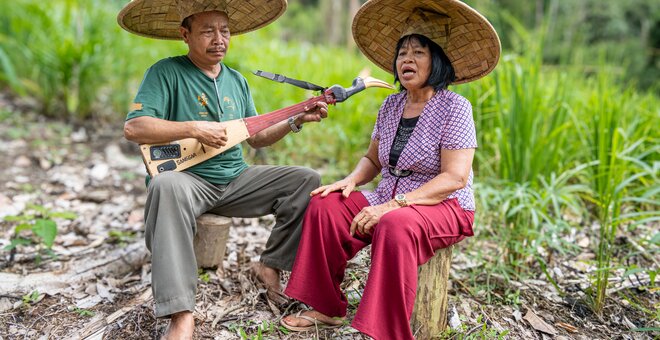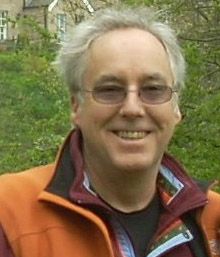
By Paul Neate
14 February 2025
For many, “Brazilian food” brings to mind classic images of churrasco – succulent grass-fed steaks sizzling over an open flame. But in reality, rice and beans are the foundation of most Brazilians' diets, even those who love beef.
However, there’s room for more besides arroz e feijão.
Maize is emerging as a key component of the country’s agricultural system for both domestic consumption and export. Just last year, Brazil overtook the United States as the world’s largest exporter of maize, accounting for nearly one-third of all maize exports worldwide.
Conserving and making available the diversity of these crops for use safeguards the country’s food and nutrition security and also supports the export market.
A Megadiverse Country
Brazil is a vast country, covering more than 8.5 million square kilometers – twice the size of the European Union. It is one of the most biodiverse countries in the world. From the famous rainforest in the Amazon basin to fertile pampas rangelands in the south and west of the country and desert-like shrublands along the Atlantic coast, Brazil boasts wide geographic and ecological diversity.
With such a wide range of agro-ecological conditions, generations of farmers have developed – through selection and cultivation – many different landraces of rice, beans, and maize.
But much of the diversity of these crops has disappeared from farmers’ fields, replaced by modern varieties and hybrids. This makes the work of conservationists at Embrapa both invaluable and urgent.
“The genetic diversity contained in the old varieties and their wild relatives is the key ingredient to breeding new varieties essential for sustaining food and nutrition security amidst mounting challenges such as climate change and expanding global population,” says Beri Bonglim, leading this effort for the BOLD Project, which also supports Embrapa. “Once lost, this diversity disappears forever. So we must make sure that we look after the diversity we already have in our genebanks, big and small – and that is what BOLD is doing.”
Embrapa is one of the world’s largest national agricultural research and development agencies, employing nearly 10,000 staff at 46 centers spread across the country. But even the genebanks of such large agencies face challenges, including refreshing – or as experts would call it, regenerating – their seed samples to make sure they are viable, secured and available for use.
BOLDly Building on Strong Foundations
The Crop Trust’s BOLD Project works with Embrapa Rice and Beans and Embrapa Maize and Sorghum to ensure that the country’s farmers and plant breeders have access to the diversity of these crops.
“This is part of a worldwide BOLD effort that is supporting regeneration and safety duplication of seed samples in more than 40 genebanks, large and small, across 30 countries,” notes Bonglim.
Brazil sent its first shipment of seeds for backup in the Svalbard Global Seed Vault in 2011. Since then, the country has sent five additional shipments. By the beginning of 2024, Embrapa had sent nearly 5,000 seed samples to the Global Seed Vault. This includes significant back-ups of its collections of beans, maize and rice.
The collections are also backed up at the Embrapa Genetic Resources and Biotechnology Gene Bank.
In 2024, thanks to grants from BOLD, Embrapa Rice and Beans and Embrapa Maize and Sorghum regenerated additional samples of each of the three key food crops and are sending them to Svalbard for safekeeping. On 25 February 2025, Embrapa will mark a historical milestone by sending nearly 3,000 additional samples of maize, rice, and beans to the Svalbard Global Seed Vault, joining other BOLD partners in the year’s first deposit.
Supporting Regeneration and Backup, Refurbishing Facilities
After identifying seed samples of rice and beans with low viability or very low stocks, Embrapa Rice and Beans regenerated and will safety duplicate 100 landraces and over 1,000 inbred lines and traditional cultivars of rice. They will do the same for beans, regenerating 1,152 seed samples and safety duplicating 1,348 samples. These samples are being backed up at both the Cenargen Gene Bank and at the Svalbard Global Seed Vault. By the end of the project, Embrapa Rice and Beans will have more than 7,000 samples of rice and beans in the Global Seed Vault.
“We focused our efforts on materials that have been in Brazil for a long time,” said Flávio Breseghello, curator of the rice collection at Embrapa Rice and Beans. “I wouldn’t say originally from Brazil because rice and beans are exotic crops here, but they’ve been grown here for many, many years. We are focusing on diversity that we believe exists only in our collections.”
“This collaboration came at a very good moment because we had a backlog of seeds to rejuvenate, to increase amounts and to duplicate in two locations,” said Flávio. “All of those objectives have been met during this project with support of Crop Trust. And we have increased our capacity to continue doing this at a faster pace.”
The project also supported the refurbishment of screenhouses and replacement of the irrigation system used to regenerate beans. “Beans have to be carefully managed because they are pollinated by bees and other pollinators and can easily crossbreed, losing their genetic identity,” noted Ben Killian, leader of the BOLD project. “The screenhouses help keep the pollinators at bay, preserving the purity of the seed samples.”
“These investments not only ensure the project comes to a successful end, but will continue helping us for many years to come,” said Elcio Guimarães, director general of Embrapa Rice and Beans.
“We have also characterized these samples during the regeneration. Now, plant breeders and other users can find the characteristics they need and use them,” said Paula Torga, bean curator. “This really adds value to the collection – the samples were stored here but were not characterized so no one really knew what we had.” This data is uploaded to Embrapa’s Alelo information system, which syncs with Genesys, an online platform sharing data on genebank collections worldwide.
Traditional Varieties and Popcorn
Embrapa Maize and Sorghum have regenerated and safety duplicated 100 samples of maize from different parts of Minas Gerais State and an additional 100 samples of popcorn maize.
“Indigenous peoples in Brazil have long cultivated popcorn maize, contributing to the crop’s rich genetic diversity in the country,” said Flavia Teixeira, curator of the maize collection. “But growing popcorn is a great challenge because the plants are not as vigorous as common maize.”
“I want to thank the Global Crop Diversity Trust and BOLD for their support in allowing us to enhance our genebank activities to preserve the crop diversity we hold and make it available for the future generations,” she added.
BOLD in Latin America
Brazil is one of four countries in Latin America that received grants from BOLD for the regeneration and safety backup of their genebank collections. The other countries are Bolivia, Suriname and Costa Rica.
The Crop Trust will continue to support Brazil and other countries across Latin America and around the world in backing up their crop diversity and making it available for use. In doing so, we can help ensure future food and nutrition security for all.
Since 2021, the Crop Trust has worked with 42 partners worldwide to regenerate and safeguard vital seed collections. Through the BOLD Project, these partners ensure that key crop diversity remains alive and thriving in genebanks, backed up in another location, and secured for the future in the Svalbard Global Seed Vault. This essential work, supported by the Government of Norway, strengthens biodiversity, food security, and resilience for generations to come.
This story is one of many about the dedicated partners who have worked for years to regenerate seeds and send them to Svalbard for safekeeping.
Related News
Svalbard Global Seed Vault Deposit - February 2025
The Svalbard Global Seed Vault opens its doors to receive the first shipment of the year of the world's crop diversity. This deposit marks a major milestone in international collaboration for food security and the conservation of crop diversity.
24 Feb 2025 - 25 Feb 2025
400-Year-Old Bolivian Newcomer Ships Seeds to Svalbard
A 400-year-old university in Bolivia is set to become the latest depositor to the Svalbard Global Seed Vault, thanks to support from the Government of Norway, channeled through the Crop Trust.
Founded in 1624, the Universidad...
21 Oct 2024
Keeping Malan Alive in Central Kalimantan
Papa Dewi looked out at fields covered with a kaleidoscope of crops: rice, cowpea, eggplant, maize, and more. “This is our way of life,” said the Dayak farmer from Indonesia’s Central Kalimantan. “This is malan.”
Malan means...
18 Jun 2024

